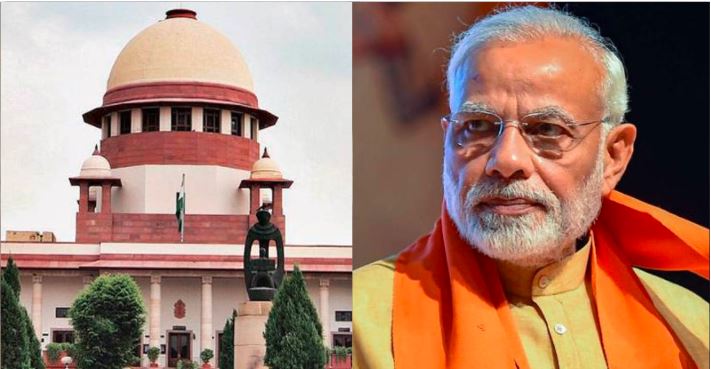Amidst the surging second wave of the Coronavirus pandemic, one news story that seemingly went unnoticed was the Supreme Court seeking the government’s response on the highly controversial ‘Places of Worship Act” introduced and enacted by the Congress government in 1991.
A bench led by former Chief Justice of India Sharad A. Bobde issued notice to the Union Ministries of Home, Law and Culture on a plea filed by advocate Ashwini Kumar Upadhyay against various provisions of the Places of Worship (Special Provisions) Act of 1991, asking the central government to respond to it. However, the news of the Supreme Court taking notice of the controversial act was quietly swept under the rug by liberal media and made little to no noise amongst the public, as it didn’t suit the ‘secular’ agenda.
“The Act declared that the character of places of worship-pilgrimage shall be maintained as it was on August 15, 1947 and no suit or proceeding shall lie in court in respect of disputes against encroachment done by fundamentalist barbaric invaders and lawbreakers and such proceeding shall stand abated,” the petition to the Supreme Court read.
Thus with the ball in the central government’s court, the Modi cabinet’s response to the plea is fundamental to whether Hindus will be able to reclaim their temples in Kashi and Mathura or not. As a government that at the core is a ‘Hindu nationalist’ one, the onus lies on it to ensure that the discriminatory act is junked as soon as possible, so as to ensure a wave of cultural reclamation is initiated in the country.
The Places of Worship (Special Provisions) Act 1991 was introduced on July 11, 1991, by the Narasimha Rao govt at the centre with a motive to prevent Ram Janmabhoomi-like reclamation movements for other places by Hindus in India.
Although the Ram Janmabhoomi dispute had been exempted from the provisions of the act, the legislation effectively acts as a bar upon determination of all other such disputes across the country.
In the present context, this implies that even after a verdict in the Ram Janmabhoomi case, it will not be possible to bring similar property disputes before the Courts in order to restore the original status of innumerable temples, many of them being prominent ones, that bore the brunt of the Islamic invasion and were in a number of cases converted into Mosques.
As reported by TFI, after the Archaeological Survey of India (ASI) was instructed by Varanasi court to conduct a survey around the Kashi Vishwanath Temple upon which the Gyanvyapi mosque was forcefully built upon — another petition had been filed in a local Mathura court seeking a survey of the Jama Masjid in Agra and the Shahi Eidgah Mosque in Mathura to find out if idols of lord Krishna allegedly looted from the Mathura structure are buried in the Agra Mosque.
Proving that the Gyanvyapi Mosque was built on the ruins of the Vishwanath Temple should not be a tedious task for the ASI as the structure and its pillars are visible to the naked eye. However, the only hurdle in the path is the Places of Worship Act 1991. The future course of action will entirely depend on the government’s response and one can be optimistic that perhaps the Modi government will once again show the resolve to tackle another contentious issue — just like it has done in the past seven years.
